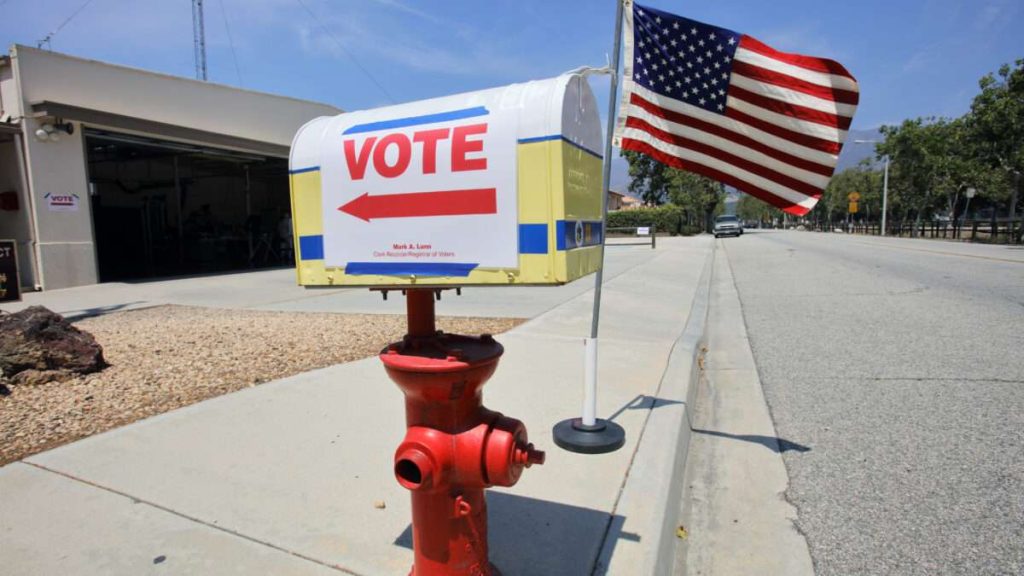Conservatives often blame a 2014 California ballot initiative for an increase in crime across the state. Next month, voters have the option to undo some of its provisions. Should they?
California’s Proposition 47 passed by a 60–40 margin in 2014. The proposal would “require misdemeanors instead of felonies for nonserious, nonviolent crimes like petty theft and drug possession, unless the defendant has prior convictions for specified violent or serious crimes,” including murder and rape.
The measure established a monetary threshold for certain crimes, including shoplifting, grand theft, receiving stolen property, and check forgery. An offender caught committing a listed crime could only be charged with a misdemeanor, so long as the amount stolen was below $950. The change could also be applied retroactively to people who had already been sentenced.
Proposition 36, on the ballot in November, would walk back portions of Proposition 47. If the new measure passes, “an offender with two prior convictions for theft can be charged with a felony, regardless of the value of the stolen property,” and “The value of property stolen in multiple thefts will be permitted to be added together so that in appropriate cases an offender may be charged with felony theft instead of petty theft.”
The original measure’s $950 limit has long been controversial among conservatives, especially after viral social media videos depicted masked assailants committing brazen smash-and-grab robberies in San Francisco. “Californians effectively decriminalized shoplifting. Not surprisingly, they have more of it,” Manhattan Institute Senior Fellow Jason L. Riley wrote in a 2021 Wall Street Journal editorial that deemed San Francisco “a shoplifter’s paradise.”
At a rally in Pennsylvania over the weekend, amid a larger digression about crime and policing, former President Donald Trump said California’s relaxed penalties were to blame for higher rates of theft in the state.
“Nine hundred and fifty dollars, you’re allowed to steal; anything above that, you will be prosecuted,” he said. “Originally, you saw kids walk in with calculators, they would calculate—they didn’t want to go over the $950.”
Trump has made similar claims on the campaign trail for several weeks, saying in August, “You have thieves going into stores with calculators calculating how much it is, because if it’s less than $950 they can rob it and not get charged.”
Of course, it’s not true that shoplifting less than $950 is no longer illegal—it can still be charged as a misdemeanor. “What Prop 47 did is increase the dollar amount by which theft can be prosecuted as a felony from $400 to $950 to adjust for inflation and cost of living,” Alex Bastian, who co-authored the proposition, told the Associated Press in 2021. “But most shoplifting cases are under $400 to begin with, so before Prop 47 and after Prop 47, there isn’t any difference.”
And even after being raised to $950, California’s felony threshold is lower than more than half of all other U.S. states: Deep red states like Montana and Kansas set theirs at $1,500, while Texas’s is set at $2,500.
“Under current law, prosecutors can already add together thefts that are demonstrably related, for example multiple thefts from the same store in the same week or skimming small amounts from your employer every day,” notes the Vera Institute of Justice, a nonprofit research and policy advocacy organization that supports criminal justice reform (and opposes Proposition 36).
In fairness, evidence indicates that certain crimes did increase after Proposition 47. “Driven by larcenies, property crime jumped after Prop 47 compared to the nation and comparison states,” according to a September 2024 report by the Public Policy Institute of California. At the same time, it wasn’t the biggest contributor: “Evidence is clearer that retail theft increased due to pandemic responses by the criminal justice system, and the increases were of greater magnitude than increases due to Prop 47.”
Similarly, a 2018 study in Criminology & Public Policy found “that Prop 47 had no effect on homicide, rape, aggravated assault, robbery, or burglary. Larceny and motor vehicle thefts, however, seem to have increased moderately,” but the rates of increase were both minor and had other potential causes.
It’s also worth noting that when Proposition 47 was on the ballot, it wasn’t particularly controversial, even among conservatives. Newt Gingrich and Sen. Rand Paul (R–Ky.) both penned editorials in favor of the proposal, each co-authored with B. Wayne Hughes Jr. (Hughes, a Republican billionaire, donated over $1.25 million in support of the proposal, just edging out the amount given by George Soros’ Fund for Policy Reform.)
“Obviously, we need prisons for people who are dangerous, and there should be harsh punishments for those convicted of violent crimes,” read Gingrich’s editorial. “But California has been overusing incarceration. Prisons are for people we are afraid of, but we have been filling them with many folks we are just mad at.”
“We must change our current system – a system that drains tax dollars, destabilizes families and, worse, isn’t making us any safer,” read Paul’s. “It’s therefore no surprise that conservatives embrace this measure….When something offers so much promise for our public safety and public resources, why wouldn’t we?”
In part, the original proposal was a response to Brown v. Plata, the 2011 Supreme Court decision which determined that placing a limit on California’s prison population was “necessary to remedy the violation of prisoners’ constitutional rights.” A district court panel had determined the state’s prison facilities held nearly twice as many inmates as they were designed for, and it ordered the state “to reduce its prison population to 137.5% of design capacity,” a reduction which “could be as high as 46,000 persons.”
“A decade of research has concluded that Prop 47 accomplished its goals,” the Vera Institute notes. “Studies have concluded that it reduced recidivism, saved the state more than $800 million, and reduced both the prison population and its racial disparities. Researchers have shown that it did not increase violent crime, robbery, or burglary.”
The post Should California Vote To Roll Back Criminal Justice Reforms? appeared first on Reason.com.







